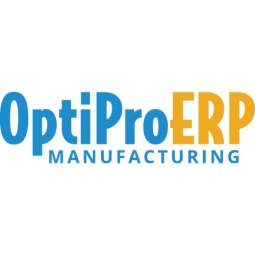下载PDF
How SAP Business One and ShipStation Improved Fulfillment for BILLY Footwear
技术
- 功能应用 - 企业资源规划系统 (ERP)
- 功能应用 - 仓库管理系统 (WMS)
- 应用基础设施与中间件 - 数据交换与集成
适用行业
- 零售
- 电子商务
适用功能
- 仓库和库存管理
- 销售与市场营销
用例
- 库存管理
- 供应链可见性(SCV)
- 仓库自动化
服务
- 系统集成
- 软件设计与工程服务
挑战
BILLY Footwear faced significant challenges in managing their inventory and fulfillment processes due to rapid sales growth and the complexity of delivering products through multiple retail channels. From 2018 to 2019, the company experienced a 260% increase in sales, which made it difficult to manage inventory as both retail partners and direct customers were pulling from the same stock. The team needed a scalable technology stack to streamline their accounting, inventory management, and shipping processes to support and manage this growth effectively.
关于客户
BILLY Footwear was founded in 2015 by Billy Price and Darin Donaldson with the mission to create functional shoes based on the concept of Universal Design. The company was inspired by Billy Price's personal challenge of putting on and taking off shoes after an accident in his teens that broke his neck. BILLY Footwear's unique design features unobstructed entry, allowing users to set their foot onto the shoebed and zip around the upper to secure it, making the shoes accessible for people with mobility challenges and more convenient for everyone. The company sells its products through multiple channels, including big-box retailers, marketplaces, and its own ecommerce store.
解决方案
To address their challenges, BILLY Footwear chose SAP Business One as their ERP platform to manage inventory, accounting, and improve their 3PL solution. The integration of SAP Business One with a new 3PL vendor allowed the company to centralize their operations and reduce time spent on navigating B2B orders and inventory inconsistencies. OptiProERP, a complete business management solution for retail/ecommerce, distribution, and manufacturing on SAP Business One, was also implemented to help manage, automate, and scale backend processes from order to fulfillment. OptiProERP seamlessly connected to ShipStation, ecommerce solutions, and EDI integrations, enabling BILLY Footwear to streamline and automate processes more efficiently. The integration of OptiProERP with SAP Business One, ShipStation, and Shopify provided a unified view of their business, simplifying the fulfillment process and allowing the team to focus on other aspects of the business.
运营影响
数量效益
相关案例.

Case Study
Improving Production Line Efficiency with Ethernet Micro RTU Controller
Moxa was asked to provide a connectivity solution for one of the world's leading cosmetics companies. This multinational corporation, with retail presence in 130 countries, 23 global braches, and over 66,000 employees, sought to improve the efficiency of their production process by migrating from manual monitoring to an automatic productivity monitoring system. The production line was being monitored by ABB Real-TPI, a factory information system that offers data collection and analysis to improve plant efficiency. Due to software limitations, the customer needed an OPC server and a corresponding I/O solution to collect data from additional sensor devices for the Real-TPI system. The goal is to enable the factory information system to more thoroughly collect data from every corner of the production line. This will improve its ability to measure Overall Equipment Effectiveness (OEE) and translate into increased production efficiencies. System Requirements • Instant status updates while still consuming minimal bandwidth to relieve strain on limited factory networks • Interoperable with ABB Real-TPI • Small form factor appropriate for deployment where space is scarce • Remote software management and configuration to simplify operations

Case Study
How Sirqul’s IoT Platform is Crafting Carrefour’s New In-Store Experiences
Carrefour Taiwan’s goal is to be completely digital by end of 2018. Out-dated manual methods for analysis and assumptions limited Carrefour’s ability to change the customer experience and were void of real-time decision-making capabilities. Rather than relying solely on sales data, assumptions, and disparate systems, Carrefour Taiwan’s CEO led an initiative to find a connected IoT solution that could give the team the ability to make real-time changes and more informed decisions. Prior to implementing, Carrefour struggled to address their conversion rates and did not have the proper insights into the customer decision-making process nor how to make an immediate impact without losing customer confidence.

Case Study
Digital Retail Security Solutions
Sennco wanted to help its retail customers increase sales and profits by developing an innovative alarm system as opposed to conventional connected alarms that are permanently tethered to display products. These traditional security systems were cumbersome and intrusive to the customer shopping experience. Additionally, they provided no useful data or analytics.

Case Study
Ensures Cold Milk in Your Supermarket
As of 2014, AK-Centralen has over 1,500 Danish supermarkets equipped, and utilizes 16 operators, and is open 24 hours a day, 365 days a year. AK-Centralen needed the ability to monitor the cooling alarms from around the country, 24 hours a day, 365 days a year. Each and every time the door to a milk cooler or a freezer does not close properly, an alarm goes off on a computer screen in a control building in southwestern Odense. This type of alarm will go off approximately 140,000 times per year, equating to roughly 400 alarms in a 24-hour period. Should an alarm go off, then there is only a limited amount of time to act before dairy products or frozen pizza must be disposed of, and this type of waste can quickly start to cost a supermarket a great deal of money.

Case Study
Supermarket Energy Savings
The client had previously deployed a one-meter-per-store monitoring program. Given the manner in which energy consumption changes with external temperature, hour of the day, day of week and month of year, a single meter solution lacked the ability to detect the difference between a true problem and a changing store environment. Most importantly, a single meter solution could never identify root cause of energy consumption changes. This approach never reduced the number of truck-rolls or man-hours required to find and resolve issues.






